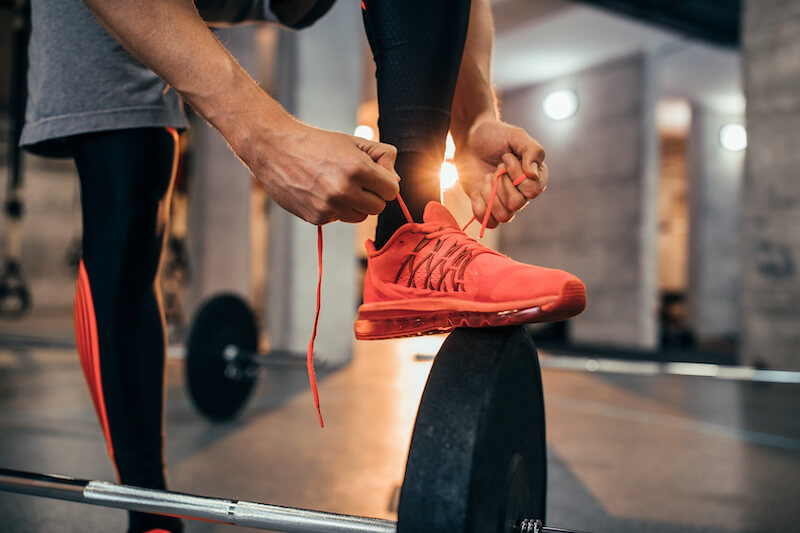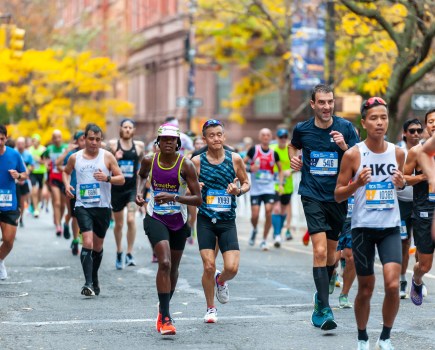Wherever you’re at in your fitness journey, it’s always important to start with strong foundations. Whether you’re a gym rookie or have spent years honing your strength in the squat rack, what you wear on your feet can have a huge impact on performance. Plus, it can also be a way of preventing injuries. But it’s easy to find it confusing. After all, unless you have a microscope or a way of sifting through marketing speak, it can be hard to tell the differences between the best gym shoes vs running shoes.
So it’s important to know when you should (and shouldn’t) wear both. I do a lot of gym and track work so have learned the hard way why gym shoes and running shoes should only be used for their intended purpose.
Why you can trust Men’s Fitness
We spend hours testing every product or service we review, so you can be sure you’re buying the best. Our team of bike reviewers included experienced product testers, journalists and fitness writers – as well as the core MF team – who know exactly what sets the best products apart from the rest. Here experienced product tester Charlie Allenby explains the difference between gym shoes and running shoes. Find out more about how we test.
Gym shoes vs running shoes: the basics
While they might look the same, there are a few big differences between gym shoes and running shoes. The main one, though, simply comes down to their intended use.
The best running shoes are predominately for forward propulsion – the foot strike on the ground is heel-to-toe – and any side-to-side or upward movement is kept to a minimum for optimum running efficiency. A running shoe’s construction aims to aid that. There’s a noticeable drop in height between the heel and toe, there’s cushioning and shock absorption at the heel of the shoe, and its upper is kept lightweight to aid breathability and comfort on longer runs.
A gym shoe, meanwhile, isn’t so forward-focused. It’s supportive and stable for the side-to-side leaps and bounds required for the best plyometric exercises. Plus, while it includes some cushioning and heel-toe drop, it has a noticeably flatter feel than a running shoe.
When to use running shoes
As their name and design suggest, you’re best off using running shoes for light jogs, all-out sprints and everything in-between – whether that’s on the treadmill or outside. In these environments, their construction will not only offer up the most comfort and support, but will also provide performance-boosting properties such as fatigue-beating spring and cushioning during many hours of pavement (or trail) pounding.
Step into a gym in a pair of running shoes, though, and they lose a lot of their unique selling points. In the weights room, their cushioning can actually create an unstable platform during lifts and pushes on the machines. This makes them something of an unnecessary risk. They’re even not optimum for other cardio-focused equipment like the spin bike either. This is due to the flex in the sole, meaning you waste watts with every pedal stroke.

When to use gym shoes
Gym shoes are effective all-rounders for most activities and workouts. While it is possible to get more specialist and invest in the likes of the best lifting shoes, for the average gym-goer like me looking to have a versatile pair of shoes, they’re tough to beat.
That said, they do have their achilles heel. That lack of cushioning and support meaning you’re best of investing in two pairs of shoes if you’re looking to combine the gym and running.
“Workout shoes used for weight lifting and cardio exercises are not always great for long runs, unfortunately,” adds Simon Fitzmaurice, qualified running coach and a member of the sales team at The Running Works. “Many gym shoes have been created to allow for great lateral stability and ground feel – great for HIIT workouts or lifting kettlebells – but not much overall cushioning for shock absorbency on concrete.”
They are fine during warm-up or short bursts on a treadmill. However, their lack of support will soon become apparent the further you run, and with it niggles from not wearing the most optimum pair of shoes.
Related content:







